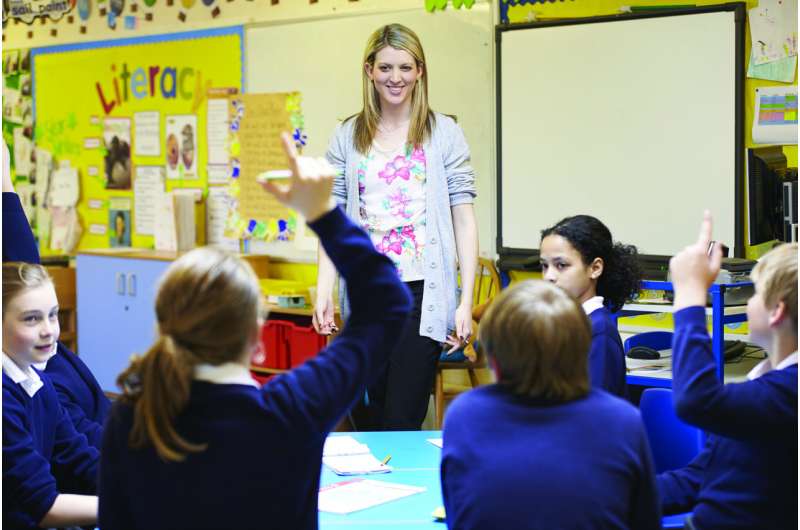This article has been reviewed according to Science X's editorial process and policies. Editors have highlighted the following attributes while ensuring the content's credibility:
fact-checked
trusted source
proofread
How teachers can help children generate wonder in the classroom

Psychologists from Lancaster University are investigating the teacher's role in generating wonder in the classroom.
Dr. Marina Bazhydai said, "Wonder is a feeling like no other, making us want to engage with a puzzling phenomenon we have encountered. It's an emotive, reflective, and meaning-making experience.
"Put simply, wonder is a feeling of puzzlement about something that seems important and interesting. It's not an easy concept to define. And yet research has shown that wonder is invaluable for learning: it increases students' intrinsic motivation to actively pursue explanations, ask questions and reflect on new information; it widens their horizons and general interests; and it deepens their emotional engagement with the pursuit of knowledge."
Dr. Bazhydai and Dr. Daphne Barker at the Active Learning Lab at Lancaster University have already worked with over four hundred primary schoolchildren in the U.K. in order to develop an assessment tool for wonder.
The children completed a 30 minute survey, "A Wonder Chart," which asked them to respond to statements based around short stories or videos.
Based on their responses to the prompts, researchers calculated a "wonder index," which can be used as a quantitative measure of how much wonder the child is prone to experiencing.
So far, they have found that children aged between 9 and 11 are sensitive to experiencing wonder which is distinct from other emotions such as feeling happy and states of curiosity.
Dr. Bazhydai said, "We know that wonder has the potential to have a positive effect on learning. But due to its elusive nature, we know little about how this plays out, or how much wonder is actually happening in school settings."
Researchers are now actively recruiting teachers to investigate their role in generating wonder in the classroom.
This makes use of a theoretical framework from Vrije University in Amsterdam, which identified eight educational strategies teachers should deploy to create "wonderful" education in the classroom:
- Be sensitive to children's personal wonder experiences and guide them further
- Be a role model by sharing their own wonder experience
- Create conditions for exploration, experimentation, questioning and reflection
- Facilitate meaning-making with the lesson content
- Stimulate imagination and creativity based on lesson content
- Defamiliarize the familiar by emphasizing the wonderful in everyday life
- Encourage contemplation and attentive awareness
- Design enriched environments through nature, art and technology
They have created a "Wonder-full Education Questionnaire," which asks teachers about their own practice in relation to each of the eight strategies.
Dr. Barker said; "We want teachers to feel empowered to implement the wonder-full education approach in their classrooms, but first, they need to reflect on how often they are doing this already, and what this looks like in practice."
If you are a Key Stage 2 teacher or teaching assistant in the U.K. schooling system, you can be involved in this research by completing a 10–15-minute online survey. Results will be anonymous and stored responsibly, in line with ethical guidelines. Please email activelearninglab@lancaster.ac.uk with any queries.
Provided by Lancaster University





















